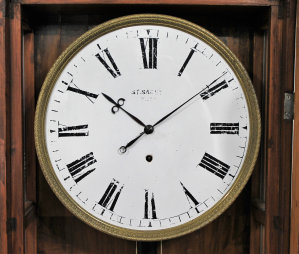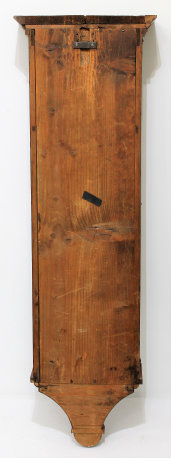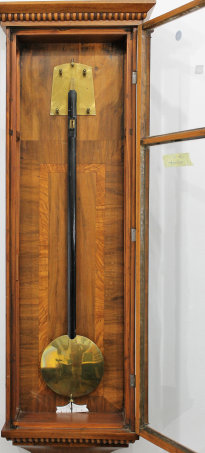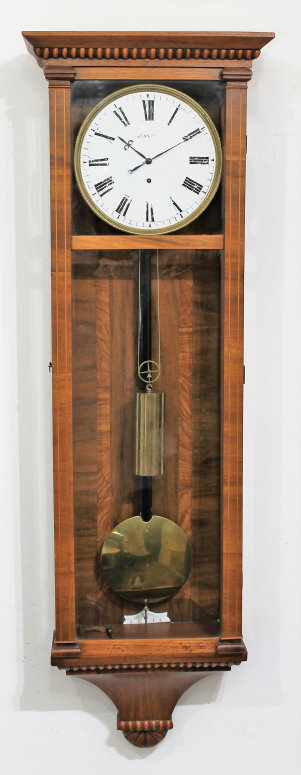
221. $350
Austrian Biedermeier Vienna, ca. 1845. The 42-inch case is veneered in walnut with satinwood banding on the door, a cross-banded inset panel on the backwall, and small carvings on the base and top. All four glasses are period, the two in the door are held in place with the original glazing. The 8-inch porcelain dial is in a finely detailed engine-turned brass bezel and is signed but unreadable, although I think the location below the signature is Wien. The hands are delicately cut steel. There is no evidence that this clock had a carved crest, but one will be included that can be glued or set on top (see photo). The 8-day (I assume) brass, time-only movement is unsigned, as was typical; it mounts on a brass backplate from which the wooden stick pendulum hangs; the bob is brass on both sides. There is an old brass weight. The clock is running. A better-quality example of an early 19th century timepiece. $350-$500.
Bruce Olenick has interpreted the name on the dial to be Stefan Saghy, who apprenticed under Anton Hawelk in Vienna in the late 1800's. Saghy made clocks in the early 1900's. If correct, a couple of possibilities need to be considered: The Saghy movement in this early case is a replacement of an earlier movement; or, this case is not as old as I suggested, and is a Saghy case and movement from the early 1900's. As I have been fooled by cases that are younger than I think in the past, I think both are reasonable hypotheses. Either way, I like this clock!

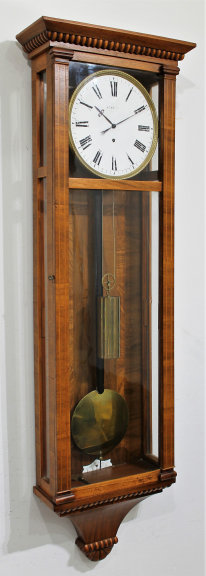
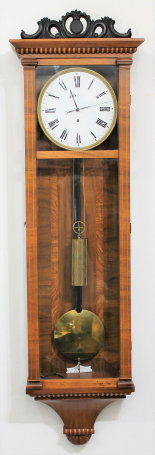

Antique American Clocks July 2022

